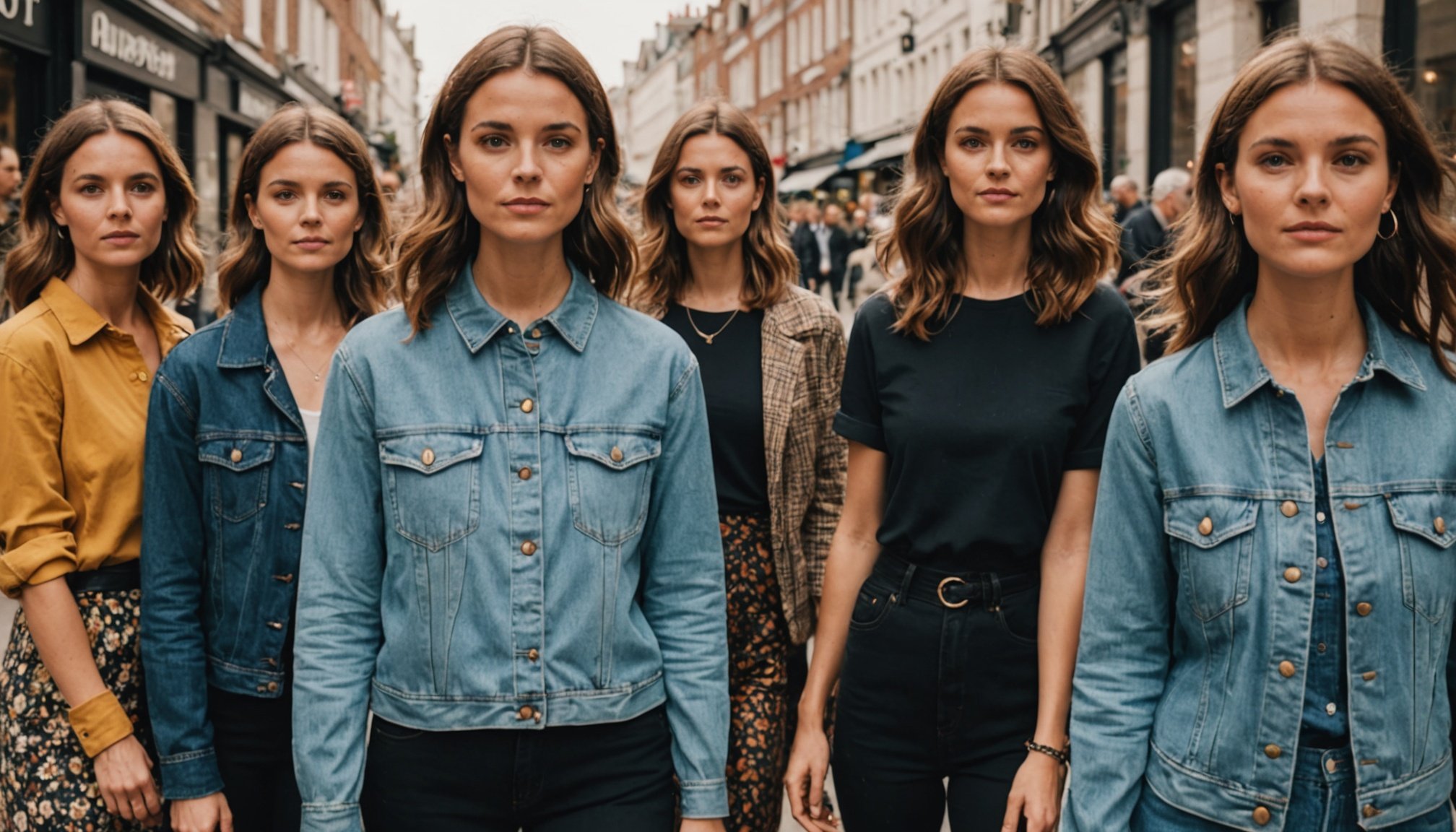Proven Pinterest Marketing Tactics for Ethical Fashion Brands
Pinterest serves as a visually-driven platform ideal for fashion marketing, particularly for sustainable fashion promotion. By understanding its potential, brands can tap into a unique audience that values visual inspiration and ethical choices. The key is to align marketing strategies with the brand’s core ethical values, ensuring authenticity and trustworthiness.
Successful UK clothing brands have adopted several vetted tactics to boost their presence on Pinterest effectively. One crucial strategy is crafting visually appealing, ethical content that resonates with potential customers. This involves using high-quality images that reflect the brand’s commitment to sustainability and highlight unique fashion pieces. Pin descriptions should be precise and include relevant keywords such as “sustainable” or “ethical” to improve reach.
In the same genre : Maximize your impact: using facebook live to innovate product launches for uk handcrafted jewelry brands
Moreover, these brands often create thematic boards that showcase their collections alongside complementary styles or ethical fashion tips. This approach not only promotes product range but also positions the brand as an authority in sustainable fashion. Engaging with users is another essential tactic; responding to comments and re-pinning user-generated content helps build community and loyalty.
By integrating these Pinterest marketing tactics, ethical fashion brands can effectively reach an audience keen on sustainability and elevate their online presence.
Also read : Maximizing revenue: leveraging youtube tutorials for uk craft supply retail success
Case Studies of Successful UK Brands
Exploring the success stories of UK fashion brands offers valuable insights into their strategies and achievements. Here we will dive into the approaches taken by some ethical brands that have leveraged Pinterest to enhance their visibility and customer engagement.
Brand 1: Overview of Their Strategy
An ethical UK fashion brand stood out by prioritising sustainable practices alongside a robust Pinterest strategy. They focused on creating visually appealing content showcasing their eco-friendly materials and manufacturing processes. This committed approach resonated well with audiences on Pinterest, fostering trust and building a solid community around their brand.
Brand 2: Effective Use of Pinterest
Another UK fashion brand effectively utilised Pinterest by designing eye-catching pins that highlighted their unique product features. Their strategy included detailed boards segmented by clothing categories, inspirational lifestyle imagery, and season-specific collections. This meticulous curation helped the brand establish itself as an authority in sustainable fashion on one of the most visual social platforms.
Brand 3: Results and Lessons Learned
The third UK fashion brand in our study achieved impressive results by maintaining a consistent posting schedule and actively engaging with users. Their best-performing pins were those that combined bold fashion statements with practical tips on styling sustainably. Key lessons included the importance of authenticity and aligning with audience values to drive meaningful interactions and conversions.
Creating Engaging Visuals for Sustainability
In the dynamic realm of fashion marketing, engaging visuals are indispensable. They captivate audiences and convey compelling stories. For sustainable fashion, imagery does more than just allure—it embodies ethical values. High-quality sustainable fashion imagery communicates authenticity and responsibility. These elements are crucial in distinguishing ethical brands in a crowded market.
To craft visually compelling and ethical fashion content, consider the following strategies:
- Highlight Authenticity: Use real, relatable models and environments to reinforce the brand’s commitment to sustainable practices. Natural lighting and minimal retouching enhance trustworthiness.
- Focus on Storytelling: Integrate narratives that highlight the journey of the product from concept to creation. This humanizes the fashion pieces and connects with the consumer on an emotional level.
- Embrace Colour Psychology: Utilize palettes that evoke emotions tied to nature and ethics, such as greens, browns, and blues. This subtle choice underscores the brand’s sustainable ethos.
Visual storytelling resonates profoundly with sustainability-minded consumers. Beautiful and meaningful images that tell a story of ethical practices will encourage potential customers to engage with the brand. Fashion imagery should not only advertise products but also inspire action towards a more sustainable future.
SEO Strategies for Pinterest in Sustainable Fashion
To effectively utilise Pinterest SEO for promoting sustainable fashion, understanding its unique dynamics is paramount. Unlike traditional search engines, Pinterest operates as a visual discovery tool where keywords and pin visuals collaborate to drive discoverability.
Fundamentals of Pinterest SEO
Incorporate keywords for fashion seamlessly into your pins and boards. Focus on niche terms related to ethical and sustainable fashion. By doing so, you align your content with user searches and enhance its visibility. For instance, use keywords like “ethical fashion labels” or “sustainably sourced materials” to target specific audiences.
Incorporating Keywords for Ethical Fashion
Consider key phrases that resonate with eco-conscious consumers. These might include terms like “upcycled clothing” or “organic cotton apparel.” Strategically place these in your pin titles and descriptions to boost relevance. Pay attention to seasonal trends and tailor your keywords accordingly to improve reach.
Best Practices for Pin Descriptions and Board Optimization
Craft engaging pin descriptions that vividly describe your content while naturally incorporating relevant keywords. Utilize bullet points if necessary to highlight unique features or benefits, such as:
- Reduced environmental impact
- Fair trade certifications
Optimising your boards entails using descriptive board titles and choosing cover images that align with your theme. Organise pins logically within boards, making them a coherent resource for users passionate about sustainable fashion. This method enhances user engagement and keeps your content organised.
Communicating Sustainability Effectively
Navigating the realm of sustainable messaging can seem daunting, yet it is crucial for brands aiming to foster a loyal customer base. Techniques to convey sustainability in ethical fashion communication hinge on authenticity and impact. Transparency is key. Consumers today wish to understand not just what is being done, but how and why. Explaining sourcing methods, production processes, and the brand’s environmental and social impact helps build trust.
Engaging with consumers via values-driven messaging bridges the gap between a brand’s ethical practices and customer expectations. It involves integrating the brand’s core beliefs into every facet of communication. This doesn’t simply mean stating facts. It’s about fostering an emotional connection.
Enter the art of brand storytelling. Crafting a narrative around a brand’s sustainability efforts elevates ethical fashion communication beyond mere transactions. Storytelling humanises the brand, turning ethical practices into relatable stories that resonate deeply with consumers. Effective storytelling can weave values seamlessly into the brand’s narrative, creating a shared identity with consumers.
When executed well, storytelling nurtures brand loyalty by aligning with consumers who prioritize sustainability. These techniques not only attract ethically-minded customers but also cultivate a community that advocates for the brand’s mission. Crafting sustainable messages requires a delicate balance but, when successful, provides substantial rewards.
User Testimonials and Community Engagement
In the world of ethical fashion, user testimonials play a crucial role in building trust and authenticity. These personal accounts offer a genuine connection with the brand, reflecting real-life experiences and values aligned with the consumer’s ideals. User-generated content like photos, reviews, or posts telling their fashion journey can create a solid community-building foundation.
Pinterest, being a visually driven platform, offers unique opportunities for community building. Encouraging users to share their stories or styling tips can enhance engagement. Brands can motivate participation by hosting contests or featuring user content on their boards. This not only celebrates individual creativity but also strengthens community bonds, aligning users with the brand’s ethos.
Success stories from consumers deeply resonate with those who value authenticity. For instance, when a customer shares their journey of shifting towards sustainable fashion, it mirrors the brand’s ethical values and inspires others to follow suit. Such testimonials can influence potential customers positively, showing that real people successfully embark on this eco-conscious path.
In conclusion, engaging with user-generated content on platforms like Pinterest can significantly drive community engagement and reinforce brand loyalty. It serves as a testament to the authenticity and reliability of ethical fashion brands, making the industry more approachable and trustworthy for new consumers.











